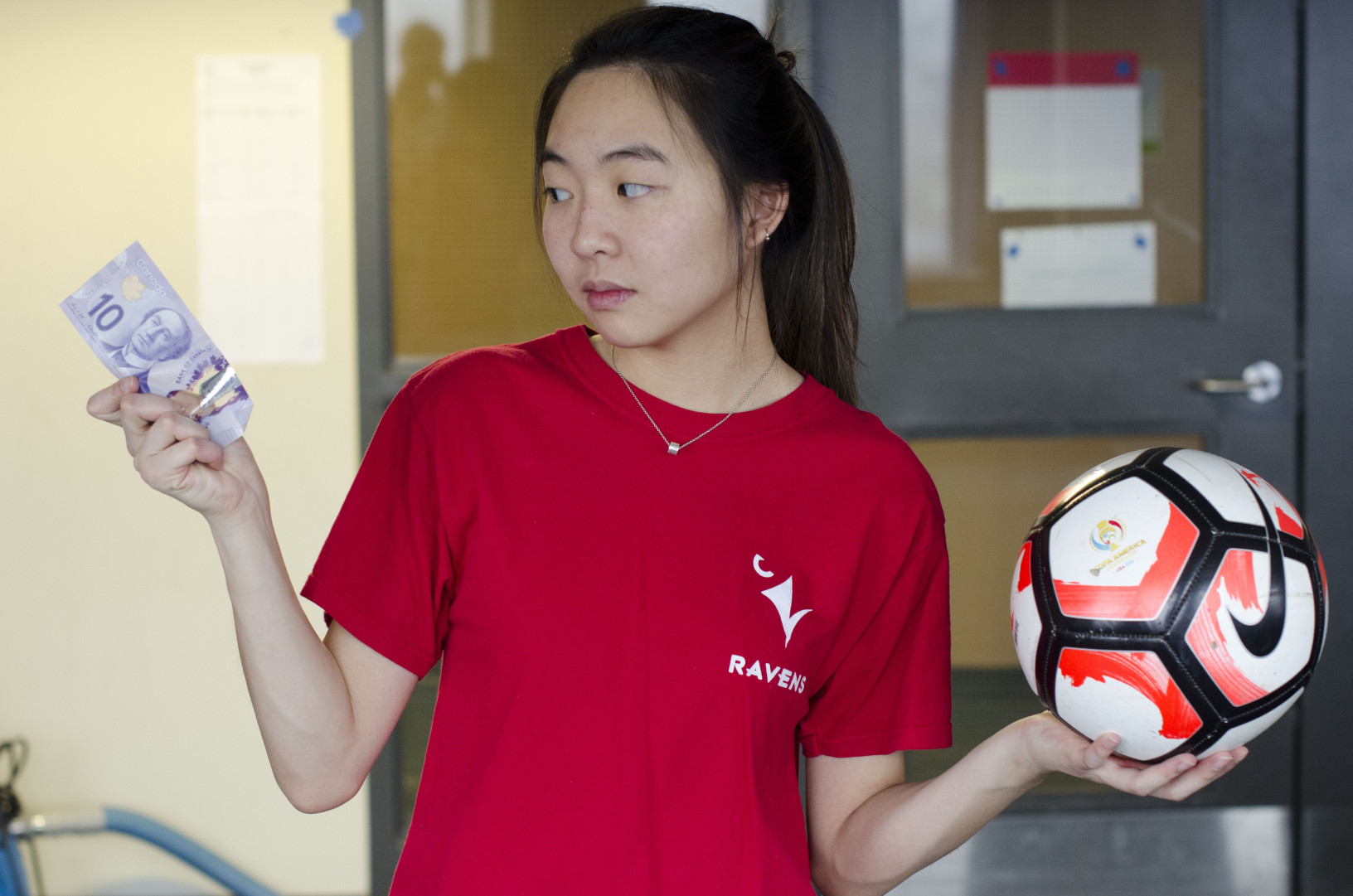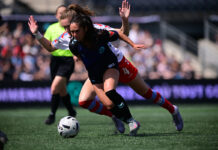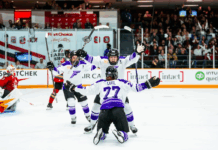Being a student can be tough—it comes with the never-ending challenge of trying to balance studies, finances, health, extracurricular activities, and some kind of social life. Throw in a commitment to a varsity or competitive club sports team, and that balance becomes all the more difficult.
Time commitment
Joel Szota, a second baseman on the Carleton Ravens baseball team—a competitive club—and fourth-year public affairs and policy management student, said he spends between 20 to 25 hours at games, practices and other team commitments per week during the season. He admits that baseball season can be intense, but it’s one of the shortest for sports at Carleton.
“We average four games and two or three practices a week, so it really adds up,” he said. “Weekends are usually completely shot because we have double headers . . . often on both Saturday and Sunday in Montreal.”
He said the off-season is better, but can still be challenging to balance.
“Our off-season is pretty athlete-run, but it’s more optional when you can fit it into your schedule,” he said. This includes practicing indoors two to three times a week.
Nate Behar, a wide receiver on the Ravens varsity football team and a fourth-year communications student, said he spends between 50 to 60 hours per week during the football season on practices, games, and other commitments.
“In the off-season there is about 13 to 14 hours a week of mandatory [training] and then we’ll organize our own sessions as well, so about 15, probably,” he said.
Making a schedule
One of the hardest challenges any athlete faces is to find class times that do not conflict with practice times.
Varsity athletes have the ability to pick their courses first, meaning they can take ones that fit with their practice schedules.
Competitive club teams pick at the same time as regular students, depending on if they have an academic scholarship or not.
“The earliest class I have is 11:30 a.m., so I have enough time to do my skating and go [to] physiotherapy,” said Sofija Mrdja, the captain of the Ravens competitive figure skating club and fourth-year psychology student. “So my mornings are usually for skating.”
Having mornings for sports and afternoons for studies, or vice versa, is a common theme. Behar said he chooses classes that end by 1 p.m. to be able to commit to football.
“This year we had football from about 3 p.m. until 9 p.m. Monday to Thursday, and then Friday was a travel day. So, you do your best to put all of your courses in the morning,” he said.
Holding down a job
Szota said that while it is “basically impossible” to work during the baseball season from mid-summer to mid-October, it is doable during the off-season.
For Szota, previous jobs include interning at the American embassy, scorekeeping for Carleton last year, and bartending.
“My story is not unique, most of our guys work more than I do, or work during the season,” Szota said. “It takes time management . . . it works both ways. You have less time, but I find that I’m better at taking advantage of moments in-between [commitments].”
Behar echoed this sentiment, and said that because of team demands, it is “literally impossible” to have a job during the season, but agreed it is possible during the offseason.
“They don’t pay you to play football in university, so the scholarship helps, but it goes right to school . . . I don’t wish I could be working more because I like my sport and I like playing, but being able to pick up more hours would definitely relieve stress from bills, from rent,” Behar said.
Mrdja said that having a flexible and understanding manager is key, having worked throughout her studies at Starbucks.
What’s it cost?
One key difference between varsity and competitive club teams at Carleton is the amount of funding they receive. Varsity teams are funded through the school and private sponsorships, said Tom Huisman, Carleton Athletics’ manager of interuniversity sport. According to Huisman, Athletics has partnered with the Carleton University Students’ Association to provide $50,000 in grants to competitive clubs.
The football team is given no financial support by the university, which has an estimated operating cost of $800,000 to $900,000 per year, according to Jennifer Brenning, Carleton’s athletic director.
She said that about $750,000 of that is raised by the Old Crow Society, a football alumni group, and the rest is made up of several sources, including corporate sponsorships, ticket sales, and summer camps. Brenning also said the football team has a “pay to participate” fee of about $250.
Additionally, varsity teams are granted paid coaches and support staff who help with the team’s growth and success.
“We get a lot of help from the coaching staff . . . if you’re falling behind in school they immediately get you help and will book you a meeting with our academic advisor,” Behar said.
According to Carleton’s Go Ravens website, up to $4,000 in athletic scholarships are offered by the head coaches for varsity student athletes who meet the academic requirements set out by Ontario University Athletics.
Mrdja said that costs to compete with Carleton are significantly lower than other organizations, as competitive skating in high school cost her about $8,000 from September to April, and $5,000 for summer skating.
She said competitive club skating fees are usually $800 a year, which pays for hotels and competition fees. But athletes still have to cover the costs of their equipment and food when traveling to competitions. The costumes used for competition were fundraised for a few years ago by the team, and are provided for free.
“As for what the school gives us, we do a competitive club application each year,” Mrdja said. “The school assesses our needs as a team and bases the amount of money we receive off of that.”
In contrast, Behar said that all mandatory costs for members of the football team are paid, other than the $250 participation fee.
“We are sponsored enough to last a season for most things,” he said. “Maybe $100 to $200 a year [that] somebody might need to spend on compression and extra workout stuff.”
While competitive club coaches are generally not paid by the university, competitive club athletes were recently granted access to the campus sports medicine clinic, including physiotherapy and free massage services.
Szota said that even if the team is playing a double header in one weekend in Montreal, they will still drive to and from the city each day due to the cost of hotel rooms.
“Everything comes back to finances,” he said. “Our coaches are not paid for what they do, so by the nature of it they have other commitments . . . they are not able to come out this time of year, but in September and October they are amazing.”






